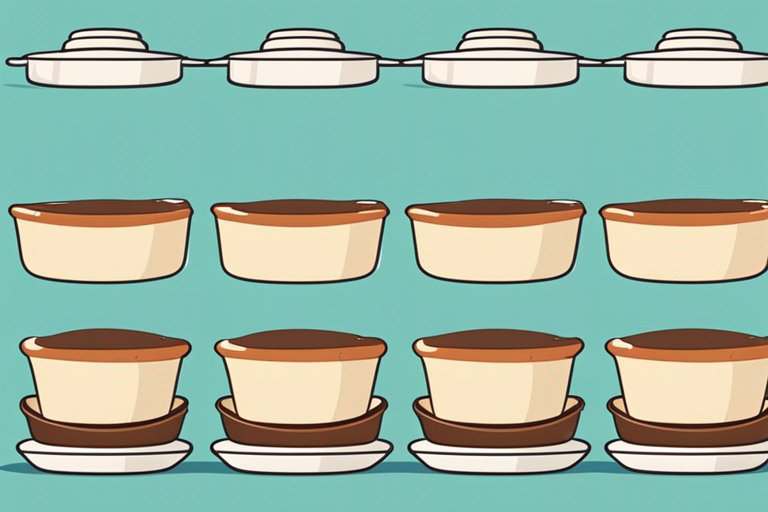
How Long Do Pudding Cups Last After the Expiration Date?
Get Your Free Food Safety Cheat Sheet
30 most common foods with instant answers. Print it and stick it on your fridge—completely free!
How Long Do Pudding Cups Last After the Expiration Date?
Pudding cups are a popular and convenient treat for both kids and adults. However, like any other food product, pudding cups also have a limited shelf life. In this blog post, we will discuss how long pudding cups last after the expiration date, how to properly store them, and signs to look out for when they may no longer be safe to eat.
Understanding Expiration Dates on Pudding Cups
When it comes to pudding cups, the expiration date printed on the packaging is a good indicator of how long the product will stay fresh. The expiration date is determined by the manufacturer based on various factors such as ingredients used, packaging materials, and storage conditions.
Factors Affecting Shelf Life of Pudding Cups
- Ingredients: The type of ingredients used in the pudding can affect its shelf life. For example, pudding cups with dairy products may spoil faster than those without.
- Packaging: The quality of the packaging material and how well it is sealed can impact the shelf life of the pudding cups.
- Storage Conditions: Proper storage is crucial in extending the shelf life of pudding cups. Exposure to heat, light, and moisture can cause the product to spoil more quickly.
How Long Can You Keep Pudding Cups After the Expiration Date?
While the expiration date is a good guideline to follow, pudding cups can often be consumed safely past that date if stored properly. Here are some general guidelines on how long you can keep pudding cups after the expiration date:
Shelf Life of Unopened Pudding Cups
- Refrigerator: Unopened pudding cups can typically last 1-2 weeks past the expiration date when stored in the refrigerator.
- Freezer: If you want to extend the shelf life further, you can freeze unopened pudding cups. They can last up to 3 months in the freezer.
Shelf Life of Opened Pudding Cups
- Refrigerator: Once opened, pudding cups should be consumed within 2-3 days for optimal freshness and safety.
- Freezer: It is not recommended to freeze opened pudding cups as the texture may change upon thawing.
Tips for Properly Storing Pudding Cups
Proper storage is key to maintaining the quality and safety of pudding cups. Here are some tips to help you store pudding cups effectively:
- Refrigerate: Always store pudding cups in the refrigerator, especially after opening, to prevent spoilage.
- Check the Seal: Ensure that the packaging is properly sealed to prevent air and moisture from getting in.
- Avoid Temperature Fluctuations: Keep pudding cups away from temperature fluctuations and direct sunlight.
- Use Clean Utensils: When serving pudding from the cup, use clean utensils to prevent contamination.
Signs Your Pudding Cups May Be Spoiled
It is essential to know when pudding cups may no longer be safe to eat. Here are some signs that indicate your pudding cups may have spoiled:
- Mold: Visible mold growth on the surface of the pudding is a clear sign of spoilage.
- Off Smell: If the pudding has a sour or off smell, it is best to discard it.
- Unusual Texture: Any changes in the texture of the pudding, such as curdling or separation, indicate spoilage.
- Taste: If the pudding tastes off or different from its original flavor, it is best to err on the side of caution and not consume it.
Conclusion
In conclusion, pudding cups can be enjoyed past the expiration date if stored properly and if there are no signs of spoilage. By following the guidelines mentioned in this blog post, you can ensure that your pudding cups stay fresh and safe for consumption. Remember to always use your judgment and senses when determining the quality of the pudding cups, and when in doubt, it is best to discard them to avoid any food safety risks.

Authoritative Food Safety References
These agencies and university labs inform every tip and health precaution we publish.
USDA FoodKeeper – Cold Storage Guidelines
Official refrigerator, freezer, and pantry timelines maintained by the U.S. Department of Agriculture.
Visit USDA FoodKeeperFDA Produce Safety Rule & Grower Guidance
Field-to-fridge handling practices that prevent contamination of fruits, vegetables, and leafy greens.
Visit FDA Produce SafetyCDC Foodborne Illness Prevention Hub
Surveillance-backed guidance on pathogens, symptoms, and steps to reduce foodborne illness risk.
Visit CDC Food SafetyUC Davis Postharvest Technology Center
University research detailing optimal storage atmospheres for produce after harvest.
Visit UC Davis PostharvestPenn State Extension – Home Food Preservation & Safety
Peer-reviewed extension bulletins on safe canning, chilling, and reheating practices.
Visit Penn State ExtensionHow long can pudding cups last after the expiration date?
Can I eat pudding cups past the expiration date?
How should I store pudding cups to extend their shelf life?
What are the signs that pudding cups have gone bad?
Can I freeze pudding cups to make them last longer?
Get Your Free Food Safety Cheat Sheet
30 most common foods with instant answers. Print it and stick it on your fridge—completely free! Want more? Upgrade to the complete guide with 70+ foods.
Scan your food directly and get instant safety info using our AI-powered camera feature.